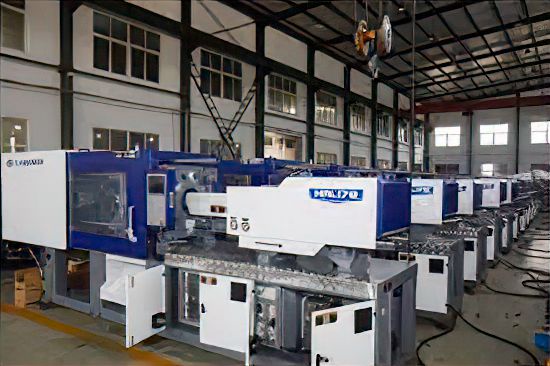Introduction to injection molding
Injection molding is a widely used manufacturing process for producing plastic parts in large volumes. It involves injecting molten material into a mold cavity, where it cools and solidifies to form the desired shape. Injection molding machines play a crucial role in this process, serving as the backbone of production lines across various industries.
Optimizing injection molding machine settings
To maximize the potential of injection molding machines, it's essential to optimize machine settings. This includes understanding and adjusting parameters such as temperature, pressure, and speed. The settings may vary depending on the type of material being used and the complexity of the part being produced.
Advanced Mold Design Techniques
In addition to machine settings, mold design plays a significant role in injection molding. Advanced mold designs allow for the production of intricate parts with precision and efficiency. Utilizing cooling channels within the mold can also help improve cycle times and reduce production costs.
Enhancing Material Selection
The choice of material is critical in injection molding, as it directly impacts the quality and performance of the final product. Advanced techniques involve experimenting with different materials, additives, and blends to achieve desired properties such as strength, flexibility, and durability.

Implementing automation and robotics
Automation and robotics have revolutionized the injection molding industry, enabling manufacturers to achieve higher levels of precision and efficiency. Integrating robots into production lines can streamline processes, reduce cycle times, and minimize errors, ultimately maximizing machine potential.
Utilizing Process Monitoring and Control Systems
Real-time monitoring and control systems allow manufacturers to ensure quality and consistency in the injection molding process. Sensors and feedback loops provide valuable data for optimizing parameters and identifying potential issues before they affect production.
Exploring Advanced Injection Molding Technologies
Advanced molding technologies, such as multi-material molding and micro-injection molding, offer new possibilities for product design and manufacturing. These technologies allow for the production of complex parts with varying materials and dimensions, expanding the capabilities of injection molding machines.
Optimizing energy efficiency
In an increasingly environmentally conscious world, optimizing energy efficiency is crucial for manufacturers. Implementing energy-saving technologies and practices not only reduces operating costs but also minimizes the environmental impact of injection molding operations.
Maximizing machine maintenance
Regular maintenance is essential for keeping injection molding machines running smoothly and efficiently. Preventive maintenance techniques help identify and address potential issues before they lead to costly downtime, ensuring maximum uptime and productivity.
Training and skill development
Investing in operator training and skill development is key to maximizing the potential of injection molding machines. Well-trained operators are better equipped to optimize settings, troubleshoot issues, and adapt to new technologies, ultimately improving overall efficiency and performance.
Ensuring Safety and Compliance
Safety should always be a top priority in injection molding operations. Compliance with regulatory standards and the implementation of safety measures help prevent accidents and ensure a safe working environment for operators and employees.
Case Studies: Real-World Applications
Several real-world examples demonstrate the effectiveness of advanced techniques in maximizing injection molding machine potential. Case studies highlight increased efficiency, productivity, and quality achieved through the adoption of advanced technologies and practices.
Future Trends and Innovations
The injection molding industry is constantly evolving, with new technologies and innovations driving progress. Emerging trends such as 3D printing, digitalization, and sustainability are shaping the future of injection molding, offering exciting opportunities for innovation and advancement.
Cost Analysis and Return on Investment
While implementing advanced techniques may require an upfront investment, the long-term benefits often outweigh the costs. Conducting a cost-benefit analysis and calculating the return on investment can help manufacturers make informed decisions about upgrading equipment and processes.
Conclusion
In conclusion, maximizing the potential of injection molding machines requires a combination of advanced techniques, innovation, and continuous improvement. By optimizing settings, embracing new technologies, and investing in training and maintenance, manufacturers can achieve higher levels of efficiency, productivity, and quality in their operations.
FAQs (Frequently Asked Questions)
- What are the main parameters to consider when optimizing injection molding machine settings?
When optimizing injection molding machine settings, it's essential to consider parameters such as temperature, pressure, and speed. These parameters can significantly impact the quality and consistency of the final product. - How can automation and robotics improve injection molding efficiency?
Automation and robotics streamline production processes, reduce cycle times, and minimize errors in injection molding operations. By integrating robots into production lines, manufacturers can achieve higher levels of precision and efficiency. - Why is material selection important in injection molding?
Material selection directly affects the properties and performance of the final product in injection molding. Choosing the right material is crucial for achieving desired characteristics such as strength, flexibility, and durability. - What are some common maintenance tasks for injection molding machines?
Common maintenance tasks for injection molding machines include cleaning, lubricating, and inspecting components regularly. Preventive maintenance techniques help identify and address potential issues before they affect production. - How can manufacturers ensure safety and compliance in injection molding operations?
Manufacturers can ensure safety and compliance in injection molding operations by implementing safety protocols, providing proper training to operators, and adhering to regulatory standards. Maintaining a safe working environment is essential for preventing accidents and ensuring employee well-being.


No comments yet